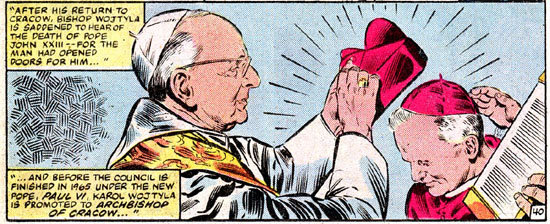
Guest Post: Andrew Bayer on Digital Comics Pricing
April 12th, 2010 Posted by david brothersAndrew Bayer is a friend of mine, and he had a few things to say about digital comics pricing, specifically with regard to Marvel’s iPad app. I thought it was interesting, maybe you will, too.
With Marvel’s iPad/iPhone app coming out and receiving gobs of acclaim for its presentation and usability, we seem to have finally gotten to the point where digital comics distribution looks like a viable business. There’s a distribution mechanism, a gorgeous UI, and most importantly, the buy-in of one of the Big Two. There are still big questions to be answered, the same sorts of questions that had to be answered for digital music and still need to be answered for digital books – how do we get the ability to buy a comic and read it in another app, on another platform, etc? How do we get to a standard file format for digital comics? How do we get rid of DRM? Of course, that last one plays into all the others, but the simplest answer there is that we, the consumers, need to prove to the publishers that there’s a strong enough market for digital comics, and a strong enough demand for portability, that they can see that DRM is not needed in order for digital comics to be a money-making endeavor for them. And that brings up the biggest question of all – how should digital comics be priced?
My initial reaction to Marvel pricing single issues of digital comics at $2 was that they were setting too high a price point – that’s been the general reaction I’ve seen pretty much everywhere, in fact. After all, Marvel’s already paid for creative, editors, legal, etc, and while there’s still production/distribution overhead for digital comics, that’s definitely going to be a lot less per issue than it is for physical floppies. So digital comics should be really cheap, you’d think. But if a publisher sets up digital comics pricing with the assumption that all the costs involved in producing the comic other than those specific to the digital edition are already covered by the print edition, they’re doomed. If the digital edition is significantly cheaper than the print edition, you’ll start seeing sales moving from print to digital – the eternal fear of the content companies that the digital version of something will cannibalize sales from the physical version. And if Marvel’s making less revenue for each digital issue than they are for the same comic in print form, then they’re going to lose revenue for every sale that switches from print to digital.
For that reason, the lowest possible price for Marvel to charge for a digital issue is one that nets them the same revenue as they’d get from a print sale of that comic. That’s the only way that digital comics can be a viable distribution stream for the publishers. They have to work under the assumption of a worst-case scenario – what if every print sale turned into a digital sale instead, with no increase in the number of copies sold? If the publisher makes less on each digital sale, well, then that worst-case scenario destroys the publisher, and they can’t take that risk. I’m working on the assumption that $2 hits that sweet spot for Marvel, where they’re taking in as much per digital issue sold as they would from a print sale. That seems about right to me – cut out the printing and shipping-to-Diamond costs, and then strip out Diamond’s cut, and finally the retailer’s cut, with the addition of Comixology’s cut, and $2 is probably the closest round number. Marvel’s not charging that because they’re trying to gouge the digital comics consumer – they’re charging that because they have to or the business model falls apart.
David brought up the question of old back issue pricing on Twitter – right now, Amazing Spider-Man #1 is at the same price in Marvel’s app as the latest issue. Admittedly, that doesn’t feel quite right – shouldn’t prices be different for issues from the ’60s than those from today? But I’d argue that Marvel again has no choice – single issue pricing must be consistent. What business case is there for selling the old issues for less? Yeah, the cover price is a lot lower than it is on a new comic now, but it’s not like you can go buy a new copy of a book published in the ’60s for lower prices than a book published a couple years ago (assuming the older book is still in print, of course). Why should digital comics be any different? Now, Marvel is missing a key feature in their store – the ability to buy an “album” of comics. Say, the first 50 issues of ASM for $30 – just as it’s cheaper to buy an album of mp3s on Amazon than it is to buy each song individually, it definitely would make sense to have similar bundling with digital comics. But Marvel can not budge from the $2 price for single issues, no matter how old the actual comic is – if they make ’60s comics a buck a piece, they’re setting a new floor for digital comic prices. If people can buy a Marvel comic for $1, why do they have to pay $2 for a different one? Marvel would end up facing pressure to drop prices on new single issues as well – and that’s just not viable as a business. There can be flexibility in pricing bundles – $30 could buy you the first 50 issues of ASM, but the same $30 might only buy you the first 25 issues of Brand New Day-era ASM – but I don’t see how Marvel could have the same sort of flexibility in single issues. Whatever you set as the lowest price for single issues, you’re going to end up having as the price for any single issue.


